Fifty years of the Tay Road Bridge
- Published
The Tay Road Bridge carries 26,000 vehicles per day between Dundee and Fife
Fifty years ago today, a new link between Dundee and Fife roared into life with the opening of the Tay Road Bridge.
Thousands attended the official opening by the Queen Mother, an occasion marked by a first day cover and even a 7" single by local teenagers Peter and Alison.
"The realisation of an idea that first caught the imagination of Dundonians more than 40 years ago", a contemporary newsreel commentator noted, was now a "splendid reality."
But while the bridge ushered in a new era of convenience for motorists, it sounded the death knell for the much-loved "Fifies" - the Tay Ferries that transported vehicles and generations of passengers between Dundee and Newport-on-Tay.
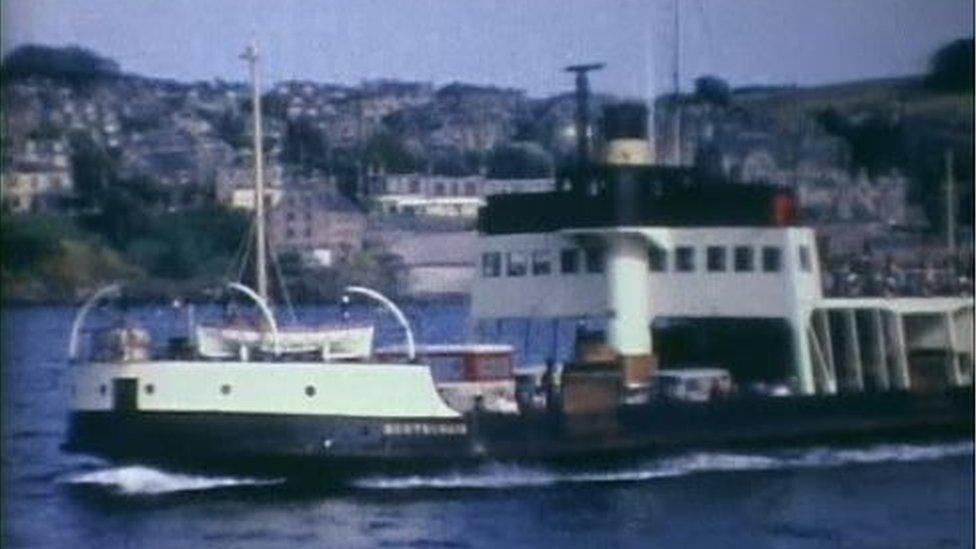
The bridge spelled the end of the "Fifies"
The last Fifie sailed just hours after the new bridge opened and was overseen by relief skipper John Lewis Squibb.
His daughter Margaret Wright said: "That was quite a sad day, especially for my dad.
"The ferry was doing the last crossing to Dundee and my dad was able to throw the last rope onto the boat before it took off.
"It was a lovely evening and the whole family was there which made it very special.
"I think he was very emotional, but progress, it was what was needed.
"The ferries could not take the quantity of traffic that was coming in.
"We needed the bridge."
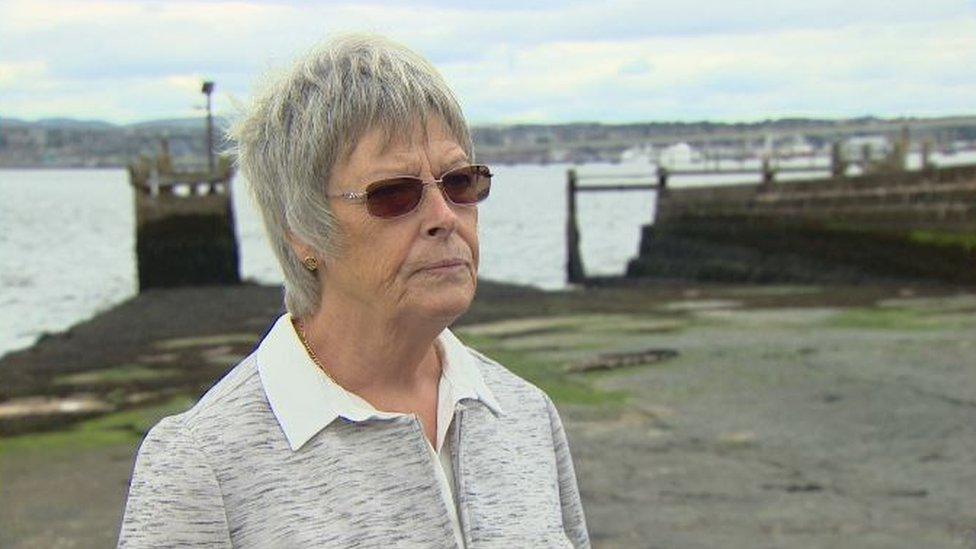
Margaret Wright said the final Fifie sailing from Newport-on-Tay was "very emotional"
Although work on the £4.8m bridge began in March 1963, there had been an appetite for such a crossing for decades.
Eventually, in 1958, test bores were taken and a traffic census was carried out, before William A Fairhurst's design was given the go-ahead two years later.
The construction involved a low temporary bridge which allowed the digging of coffer dams for the road bridge's pillars.
Conditions could be harsh and five men died in the bridge's construction, with three men lost when part of the temporary bridge collapsed in November 1965.
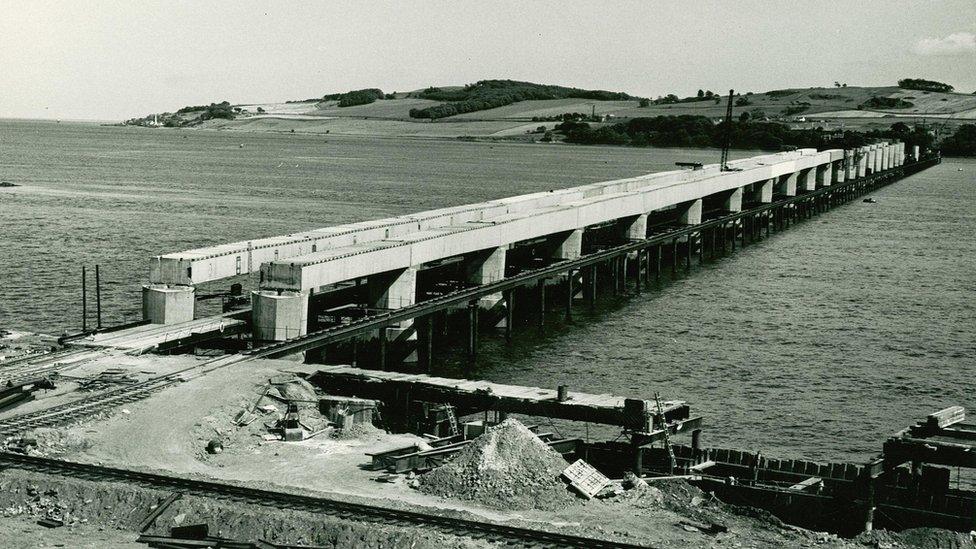
Hundreds of thousands of tons of steel and concrete were used in the bridge's construction
Bert Smith was due to work that evening but swapped his shift with John McQueen, one of the men who died.
He said: "I didn't want to work that night because my wife wasn't well, so I got a change with John McQueen.
"So I went home that night and it was not long after that, that the incident happened.
"He was killed when it should have been me. It still brings the hair up on the back of my neck yet, it really does.
"I think about them every November."

Bert Smith says he will never forget the colleagues who lost their lives
Mr Smith worked on the bridge for the whole of its three-and-a-half year construction.
He said: "It was a hard job, just because of the nature of the job. You had to be fit and able to work.
"It's a nice strong bridge.
"There's no reason for it not being there in 100 years time, because I remember all the piles that went into the foundation and the amount of concrete and steelwork that was involved."
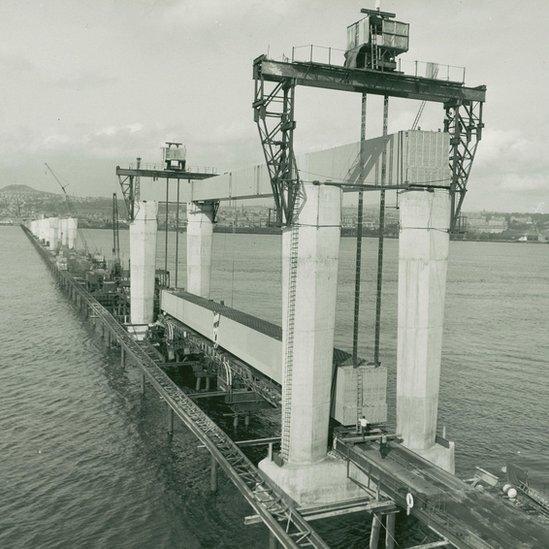
The bridge cost £4.8m and took more than three years to build
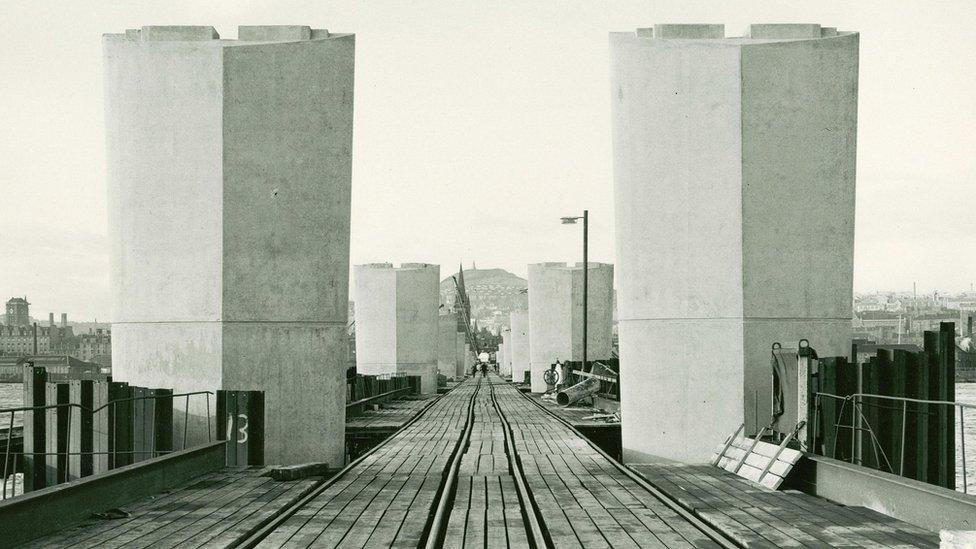
Dundee Law is visible in this 1964 photograph of the bridge's construction
In July 1966, the final girder was put in place and the Tay Road Bridge was complete.
Spanning 1.4 miles, the bridge rose from a height of 32 feet above sea level at Dundee to 125ft at Newport-on-Tay.
A viewing platform sat atop the toll booths, a feature of the bridge until tolls were abolished in 2008.
The five men who perished in the bridge's construction, along with William Logan, managing director of the main building contractor, who died in a plane crash in January 1966, are commemorated in memorial plaques beside the bridge.
Current bridge manager Alan Hutchison said it had become a "major piece of Scottish heritage transport infrastructure".
"It's been incredibly important when you consider the links it's created," he said.
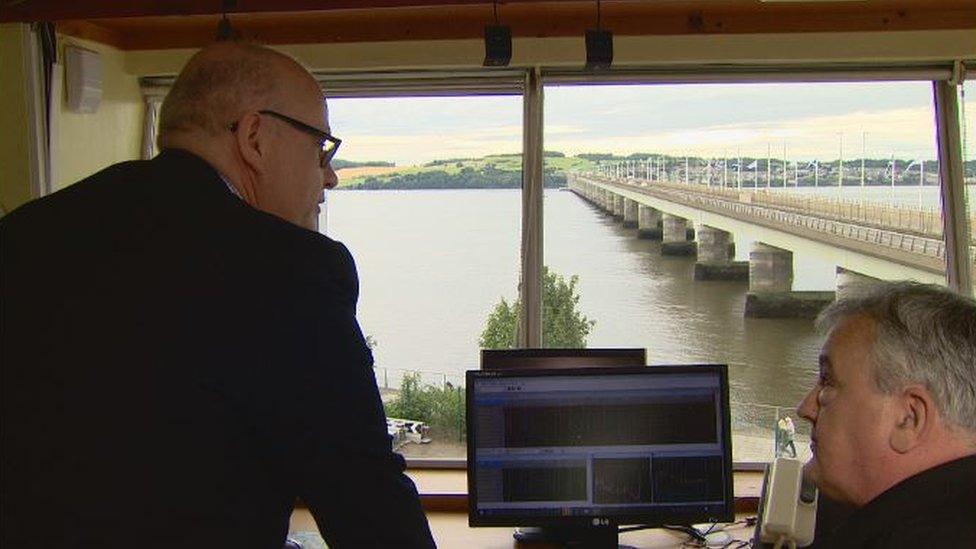
Manager Alan Hutchison and supervisor Jim McDonald help ensure the smooth running of the crossing
Currently carrying 26,000 vehicles a day, anticipated traffic on the bridge in 1966 was less than a fifth of that figure.
Mr Hutchison said the crossing has weathered the rigours of half a century of traffic "incredibly well".
He said: "We now get 44-tonne European lorries and a few years ago the bridge was strengthened to accommodate the additional loading from these.
"So, with regular maintenance and inspections, it will continue to cope very well indeed."
Supervisor Jim McDonald, who has worked on the bridge for 34 years, oversees these inspections.
He recalled one of the bridge's more unusual travellers, a runaway bull called Bertie which escaped from a nearby abattoir in July, 2000.
"They nicknamed it Houdini because it escaped over a six-foot wall," he said.
"The abattoir was about half a mile from the bridge and it came onto the ramp and went on the northbound approach before they darted it."
The bull was captured after making it to Fife and following a plea for mercy by TV comedy writer Carla Lane, it was transferred to her animal sanctuary in West Sussex.

The bridge's toll booths and viewing platform have both been consigned to history
Mr McDonald also remembers the legendary Tay Road Bridge Jif lemon tree, where plastic lemons were placed on a tree beside the toll booths by workers for almost three decades.
He said: "It was just for fun to keep people's spirits up and all the children liked it.
"Every year we'd put them out in April and then in October or November, you'd bring them in again.
"Some people thought it was a real lemon tree and would take photos of it."
The trees and the tolls are no more - but the bridge is still going strong fifty years on.

William Fairhurst is featured on a commemorative mural being painted under the bridge ramp
A weekend of celebrations will take place in Dundee and Fife to mark the anniversary.
A mural designed by Fraser Gray and Martin McGuinness, which includes a portrait of William Fairhurst is being painted underneath the Dundee bridge approach road.
Alan Hutchison said: "The Tay Road Bridge is an incredibly well-maintained bridge.
"When bridges are designed they typically have what engineers call the design life of 120 years.
"We're only 50 years into that, but there's no reason why it won't go on forever."
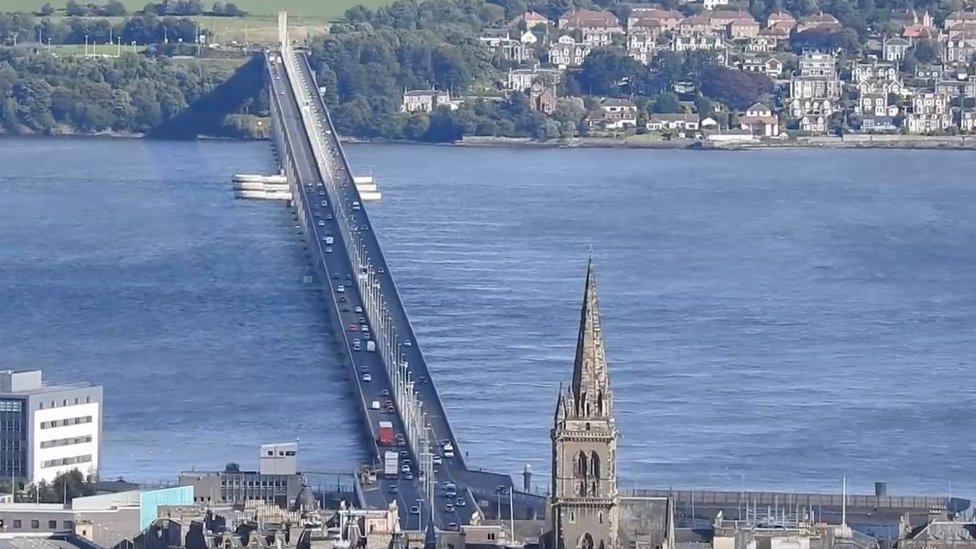
The full span of the bridge can be seen from the top of Dundee Law